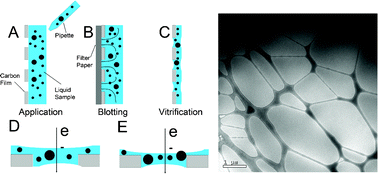Elucidating the assembled structure of amphiphiles in solution viacryogenic transmission electron microscopy
Abstract
For the past twenty years, significant progress has been made in both developing

Maintenance work is planned from 09:00 BST to 12:00 BST on Saturday 28th September 2024.
During this time the performance of our website may be affected - searches may run slowly, some pages may be temporarily unavailable, and you may be unable to access content. If this happens, please try refreshing your web browser or try waiting two to three minutes before trying again.
We apologise for any inconvenience this might cause and thank you for your patience.
* Corresponding authors
a
Department of Materials Science and Engineering and Delaware Biotechnology Institute, University of Delaware, Newark, DE 19716
E-mail:
pochan@udel.edu
Fax: +1 302 831 4545
Tel: +1 302 831 3569
b Center for Molecular Engineering and Thermodynamics, Department of Chemical Engineering, University of Delaware, Newark, DE 19716
c Department of Biotechnology and Food Engineering, Technion-Israel Institute of Technology, Haifa 32000, Israel
d Department of Chemical Engineering, Technion-Israel Institute of Technology, Haifa 32000, Israel
For the past twenty years, significant progress has been made in both developing

 Please wait while we load your content...
Something went wrong. Try again?
Please wait while we load your content...
Something went wrong. Try again?
H. Cui, T. K. Hodgdon, E. W. Kaler, L. Abezgauz, D. Danino, M. Lubovsky, Y. Talmon and D. J. Pochan, Soft Matter, 2007, 3, 945 DOI: 10.1039/B704194B
To request permission to reproduce material from this article, please go to the Copyright Clearance Center request page.
If you are an author contributing to an RSC publication, you do not need to request permission provided correct acknowledgement is given.
If you are the author of this article, you do not need to request permission to reproduce figures and diagrams provided correct acknowledgement is given. If you want to reproduce the whole article in a third-party publication (excluding your thesis/dissertation for which permission is not required) please go to the Copyright Clearance Center request page.
Read more about how to correctly acknowledge RSC content.
 Fetching data from CrossRef.
Fetching data from CrossRef.
This may take some time to load.
Loading related content
